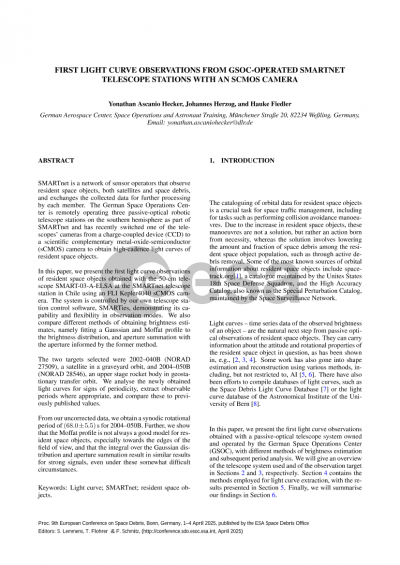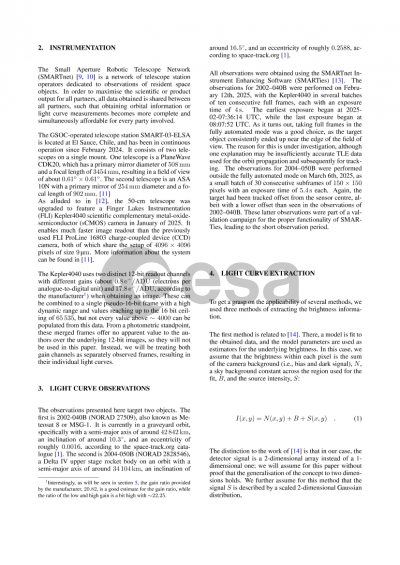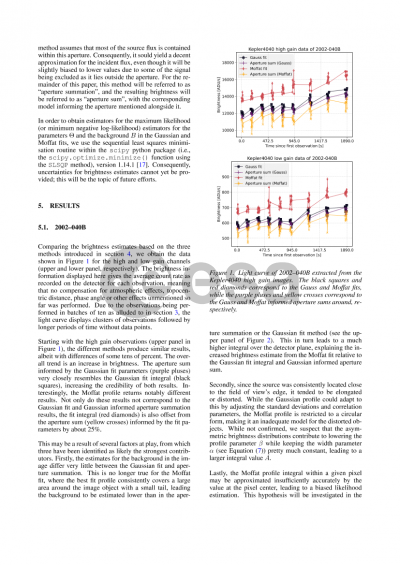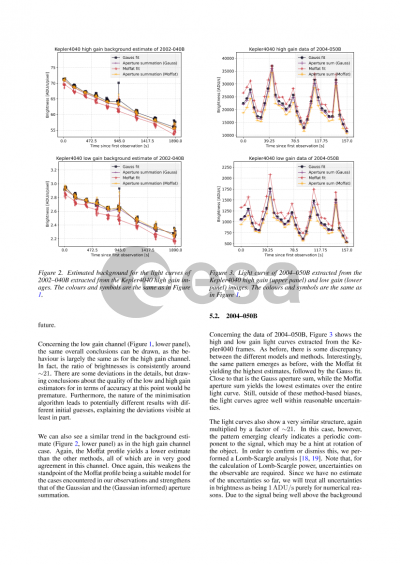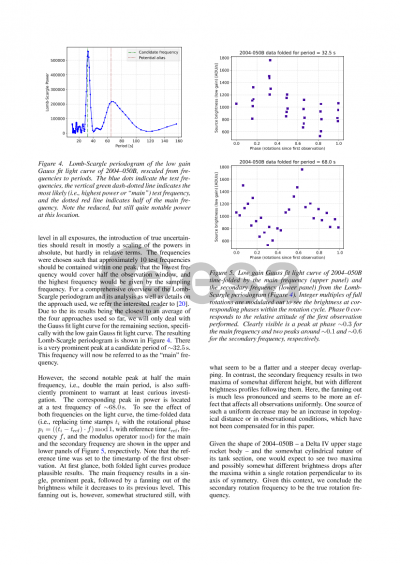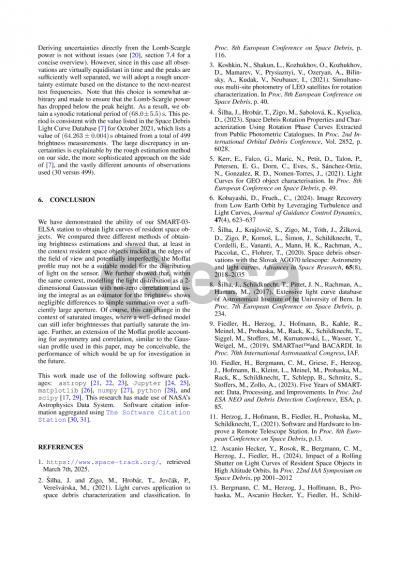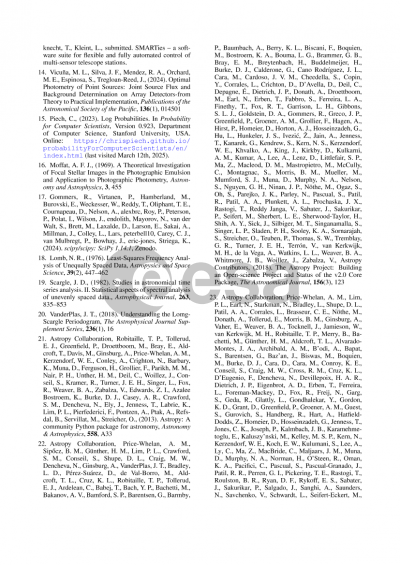Document details

Abstract
SMARTnet is a network of telescope station operators that monitors primarily the geostationary orbit regime for resident space objects (RSOs), both satellites and space debris, and exchanges the collected data for further processing by each member. The German Space Operations Center (GSOC) is operating three passive-optical robotic telescope stations on the southern hemisphere as part of SMARTnet and has recently switched one of the telescopes’ cameras from a charge-coupled device (CCD) to a scientific complementary metal-oxide-semiconductor (sCMOS) camera to obtain highcadence light curves of RSOs.
In this paper, we present the first light curve observations of RSOs obtained with the 50-cm telescope at the SMARTnet telescope station in Chile using an FLI Kepler4040 sCMOS camera. The system is controlled by our own telescope station control software, SMARTies, demonstrating its capability and flexibility in observation modes. Objects of interest for this study were selected based on previous publications by members of SMARTnet. We analyse the newly obtained light curves for signs of periodicity, extract observable periods where appropriate, and compare these to previously published values. We also compare some of these light curves to light curves obtained with an FLI ProLine 16803 CCD camera.
Preview
